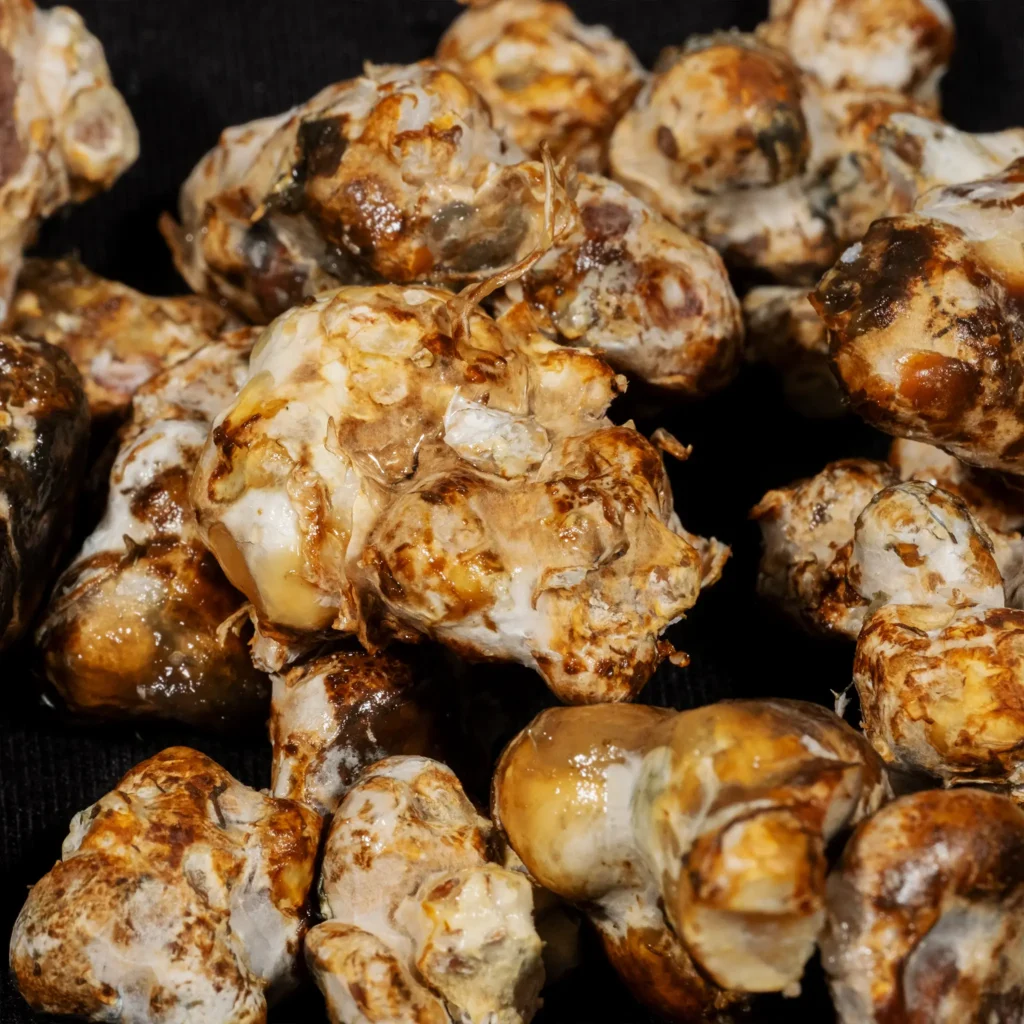Few fungal phenomena capture curiosity like the Philosopher’s Stone—the sclerotia of Psilocybe tampanensis. These “magic truffles” aren’t merely psychoactive delights; they are survival marvels, cultural icons, and enigmatic bio-structures waiting to be understood.
What Are Sclerotia? Nature’s Underground Survival Pods
Sclerotia are compact, hardened masses of mycelium—designed to endure adverse conditions with minimal water and maximum energy reserves. They act as nutrient banks, enabling the fungus to survive drought, fire, and other environmental stressors. In fungi like Claviceps purpurea, rules of ergotism trace back to sclerotia toxicity. In others like Pleurotus tuber-regium, giant edible sclerotia can reach over 30 cm and serve as traditional food sources Wikipediatropicalfungi.orgwestmadison.ars.wisc.edu.
Sclerotia contain as little as 5–10% water but remain viable for years. In experimental heating scenarios, some fungal sclerotia survived nearly 93 °C, underscoring their rugged endurance ResearchGate.

Psilocybe tampanensis: The Philosopher’s Stone Emerges
First discovered in 1977 near Tampa, Florida, this rare psychedelic fungus produces underground truffle-like sclerotia known as the Philosopher’s Stone Wikipedia. These mysterious bodies are not just fascinating—they are deliberate survival tools, storing energy and safeguarding lineage beneath the soil.
After Pollock’s discovery and cloning, P. tampanensis was revived in culture, enabling reliable sclerotia production—typically over a 3–12 week span—using substrates like ryegrass and straw, courtesy of protocols developed by pioneers like Paul Stamets WikipediaDoubleBlind Mag.
Potency: Truffle vs. Mushroom Cap
Despite being underground structures, sclerotia of P. tampanensis contain noteworthy levels of psychoactive alkaloids:
- Psilocybin content ranges from 0.31% to 0.68%, depending on the substrate WikipediaDoubleBlind Mag.
- In fresh weight terms, sclerotia may house 59–168 mg of psilocybin per 100 g, equaling potency of classic mushrooms but with a more stable chemical profile Miraculix QTests.
Unlike fresh mushrooms, sclerotia typically lack psilocin—likely due to its sensitivity to oxidation—making dry storage safer and more stable.
Ecology, Survival, and Cultivation Benefits
Truffle formation provides a key advantage in nature—protection from seasonal fire and drought, enabling regrowth when conditions improve WikipediaDoubleBlind Mag. This subterranean survival strategy also lends itself well to cultivation and long-term storage, making sclerotia remarkably suited for home growers.
Cultural and Legal Legacy
In 2008, the Netherlands outlawed psilocybin mushrooms—but overlooked sclerotia, unaware that they too contain psychoactive compounds. This loophole turned magic truffles into legal commodities and sparked global interest in cultivation and consumption WikipediaDoubleBlind Mag.
All contemporary P. tampanensis sclerotia derive from that original Florida isolate—making every new Philosopher’s Stone a direct descendant of Pollock’s discovery VICE.
Fascinating Trivia
- Survival powerhouse: Sclerotia’s ability to withstand intense heat (even 93 °C) speaks to their evolutionary brilliance ResearchGate.
- Not true truffles: Despite the nickname, Philosopher’s Stones bear no relation to culinary truffles; instead, they are dense nutrient caches with potent psychoactive profiles DoubleBlind Mag.
- Taste & texture: Often described as tart and nutty—like congealed muesli—these truffles offer a unique sensory experience Mediamatic.
Quick Reference: Philosopher’s Stone at a Glance
| Feature | Details |
|---|---|
| Species | Psilocybe tampanensis (Philosopher’s Stone) |
| Structure | Underground sclerotia (magic truffles) |
| Potency | ~0.31–0.68% psilocybin; 59–168 mg per 100 g fresh weight |
| Purpose | Nutrient reserve and survival structure |
| Cultivation Timeframe | 3–12 weeks for sclerotia formation |
| Legal Note | Truffles legal in some regions despite mushroom bans |
| Sensory Experience | Nutty, tart flavor; stable psychoactive hit |
Final Thoughts
Philosopher’s Stones are a rare fusion of fungal resilience and psychoactive culture. Their sclerotia defy drought, fire, and time—surviving underground for years while preserving potency. As both a staple of home mycology and a living artifact of fungal strategy, Psilocybe tampanensis offers much more than recreational value—it’s a testament to the artistry and survival of nature.

